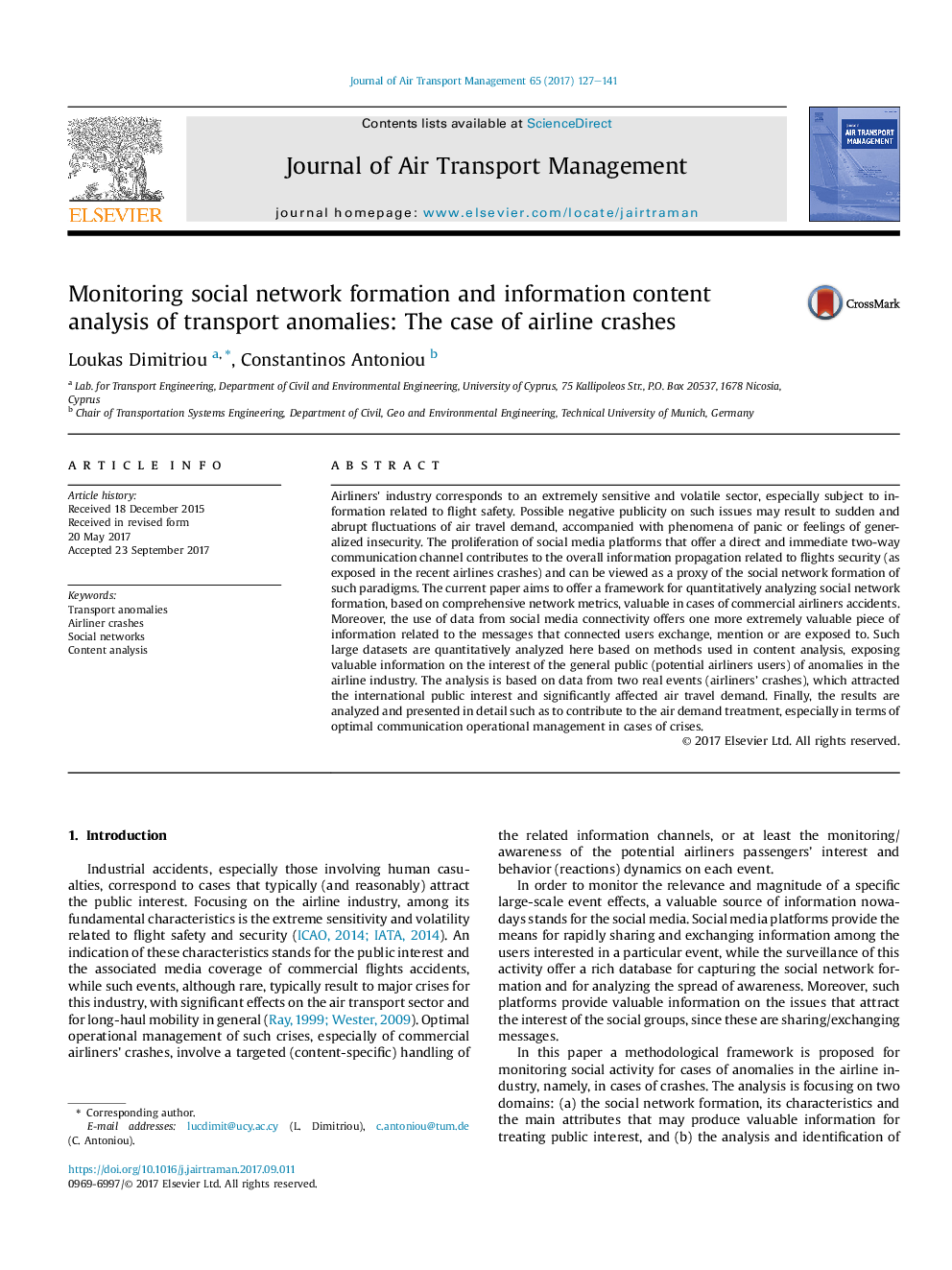| Article ID | Journal | Published Year | Pages | File Type |
|---|---|---|---|---|
| 5111523 | Journal of Air Transport Management | 2017 | 15 Pages |
Abstract
Airliners' industry corresponds to an extremely sensitive and volatile sector, especially subject to information related to flight safety. Possible negative publicity on such issues may result to sudden and abrupt fluctuations of air travel demand, accompanied with phenomena of panic or feelings of generalized insecurity. The proliferation of social media platforms that offer a direct and immediate two-way communication channel contributes to the overall information propagation related to flights security (as exposed in the recent airlines crashes) and can be viewed as a proxy of the social network formation of such paradigms. The current paper aims to offer a framework for quantitatively analyzing social network formation, based on comprehensive network metrics, valuable in cases of commercial airliners accidents. Moreover, the use of data from social media connectivity offers one more extremely valuable piece of information related to the messages that connected users exchange, mention or are exposed to. Such large datasets are quantitatively analyzed here based on methods used in content analysis, exposing valuable information on the interest of the general public (potential airliners users) of anomalies in the airline industry. The analysis is based on data from two real events (airliners' crashes), which attracted the international public interest and significantly affected air travel demand. Finally, the results are analyzed and presented in detail such as to contribute to the air demand treatment, especially in terms of optimal communication operational management in cases of crises.
Keywords
Related Topics
Social Sciences and Humanities
Business, Management and Accounting
Strategy and Management
Authors
Loukas Dimitriou, Constantinos Antoniou,
